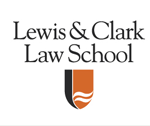The Public Trust Doctrine and the Chicago Lakefront
Document Type
Book Review
Publication Title
Michigan Journal of Environmental and Administrative Law
Journal Abbreviation
Mich. J. Env't & Admin. L.
Abstract
Lakefront: Public Trust and Private Rights in Chicago is Joseph Kearney and Thomas Merrill’s engaging account of how public law affected the development of the Chicago lakefront, is a meticulously detailed history of a century-and-a-half of law and urban affairs. The authors center the book around what they call the Great Lake Front Case, otherwise known as Illinois Central Railroad v. Illinois, a U.S. Supreme Court decision in 1892. They claim that case created the American public trust doctrine, but in fact the Court endorsed public ownership of streambeds a half-century earlier. What the 1892 decision did was to extend public rights to include a restraint on alienation to ensure against improvident transfers terminating public rights and did so using trust language. The case was part of an era in which the Court dramatically expanded the scope of public rights beyond those recognized in English and Roman law. Lakefront does not endeavor to examine the decision in light of this context and questions the significance of the case in preserving the Chicago lakefront.
The authors’ contention is that, despite their mention of public trust in the book’s title, the common law public dedication doctrine, enforced mostly by landowners like Montgomery Ward (the “watchdog of the lakefront”) did more to preserve the Chicago lakefront than did the public trust doctrine, at least before 1970. They seem to regret the dedication doctrine’s demise into statutory doctrine after that date, and the simultaneous rise of the public trust doctrine into an enforceable tool that could stop lakefills proposed by U.S. Steel and Loyola University and a proposed Lucas museum on public parkland. They accuse the trust doctrine as being haphazard, citing contrasting results in cases that approved a substantial lakebed fill for a Northwestern University expansion and the siting of a public school and the renovation of Soldier Field on parklands. They conclude that Illinois courts should clarify the public trust doctrine by clearly subjecting it to legislative control, a somewhat surprising result in light of their treatment of the decline of the public dedication doctrine.
This review concentrates on the public trust doctrine in the book’s title, but the authors go considerably beyond that doctrine in discussing lakefront issues such as the lakebed filling in the wake of the Chicago fire of 1871, siting of the Columbian Exposition of 1893, the reversal of the Chicago River, the filling of the Streeterville neighborhood north of the river, and the extension of Lake Shore Drive north and south. They do make many important contributions to an understanding of the public trust, like explaining Justice Stephen Field’s infusion of an antimonopoly impulse, the fact that nearly all of the Illinois public trust case law ratified existing lakebed fills, and the nonuse of the doctrine until its revival in the 1970s. However, they regret the evolution of the use of the express language of Illinois Central to protect against “substantial impairment” of the environment, overlook the role of the lakefront case law in extending the scope of the doctrine beyond submerged lands, and make no mention of the dramatic recent expansion of the doctrine internationally. Lakefront is a great read about Chicago history, but it undersells the public trust doctrine and its role in American law.
First Page
1
Last Page
21
Publication Date
2022
Recommended Citation
Michael Blumm,
The Public Trust Doctrine and the Chicago Lakefront,
11
Mich. J. Env't & Admin. L.
1
(2022).
Available at:
https://lawcommons.lclark.edu/faculty_articles/131

